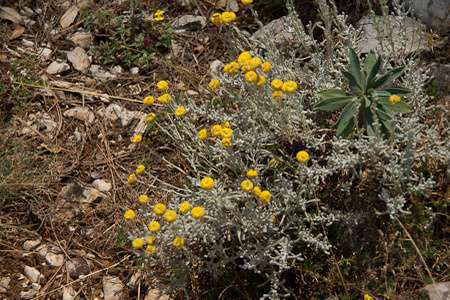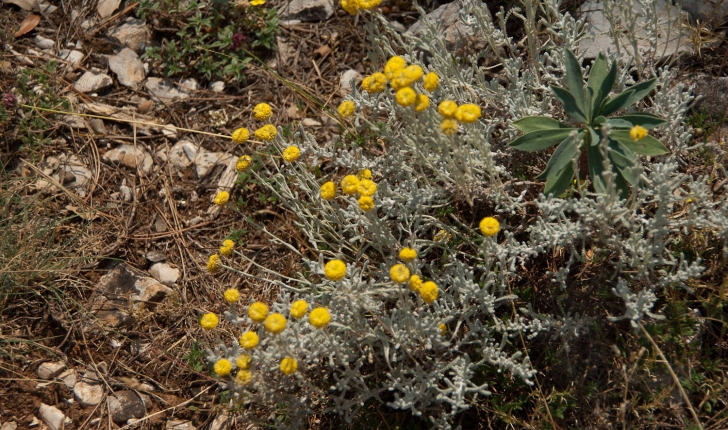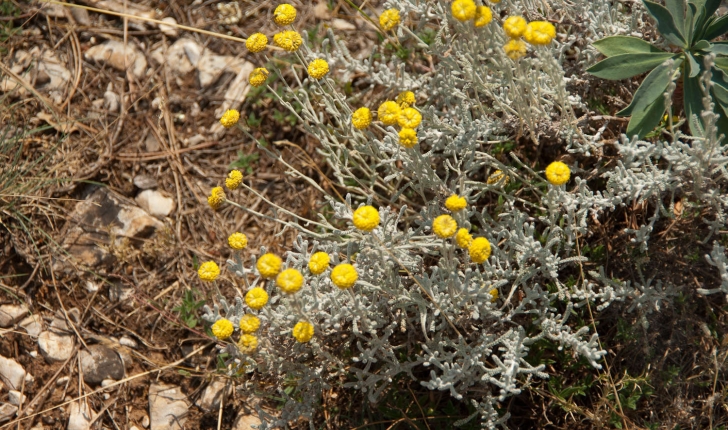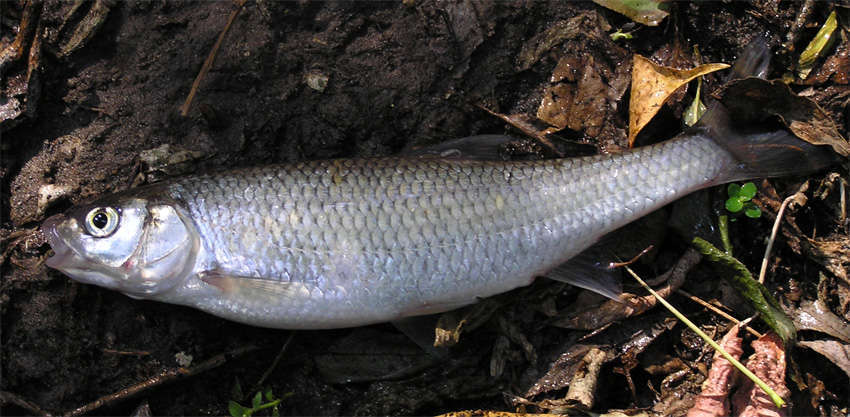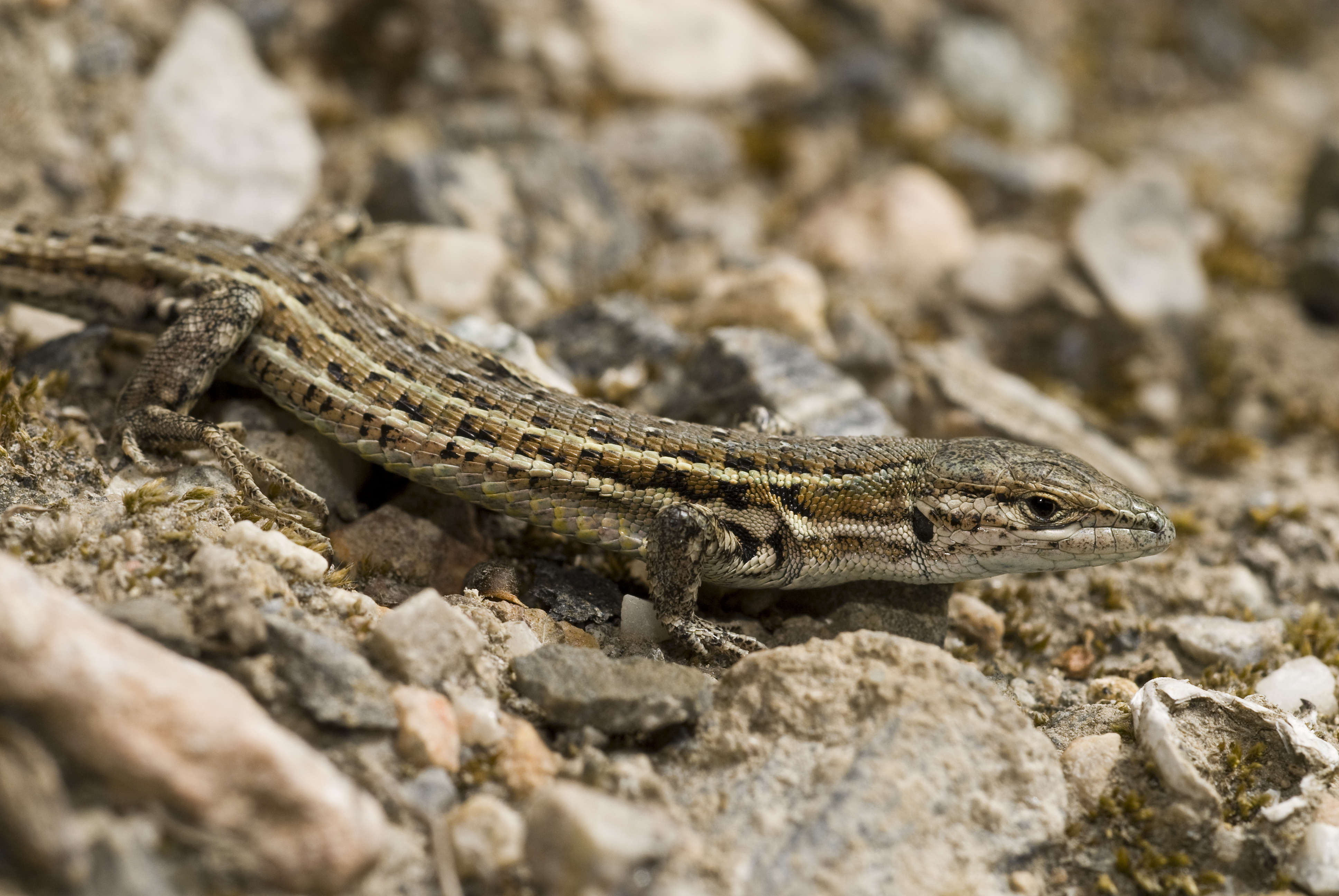
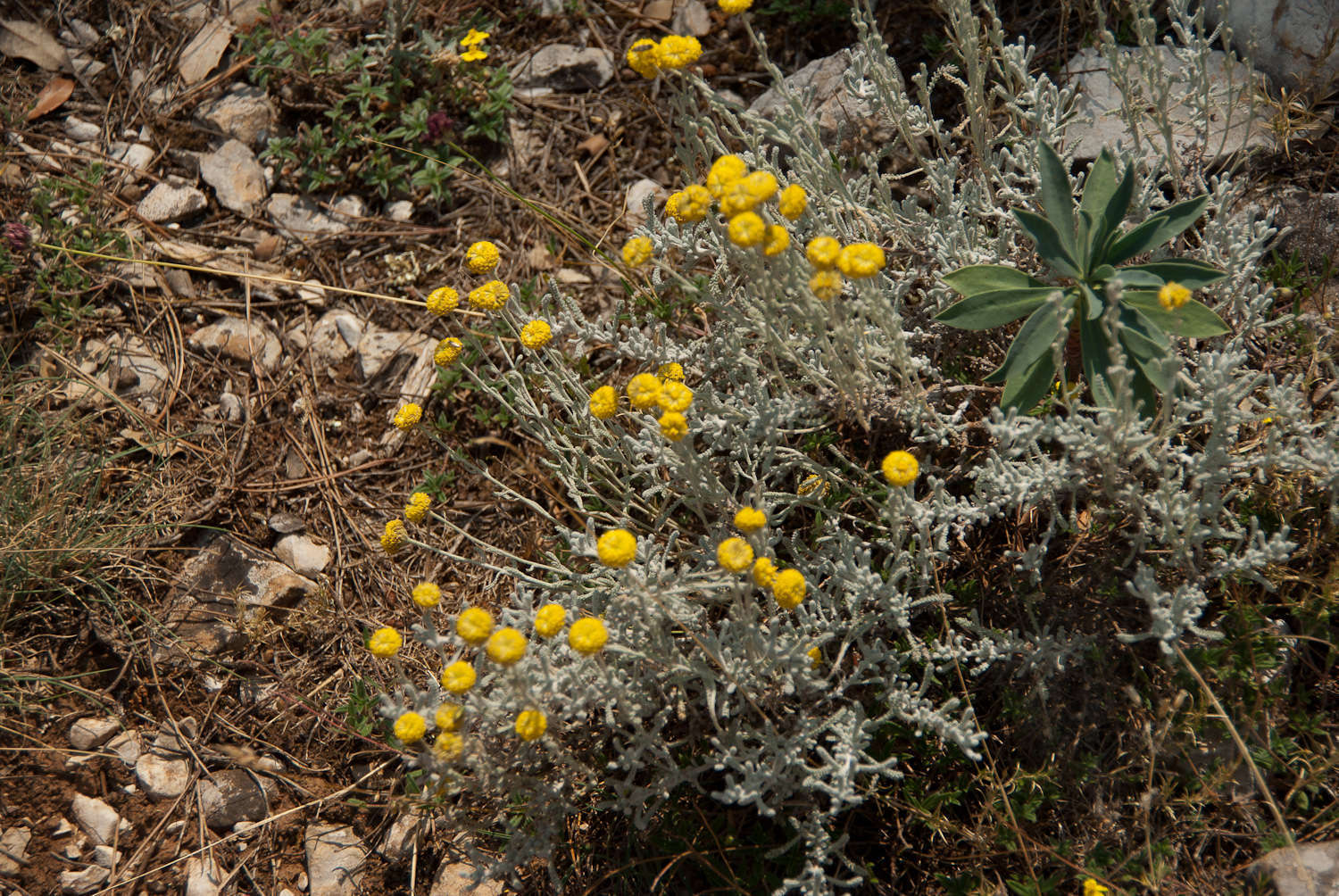
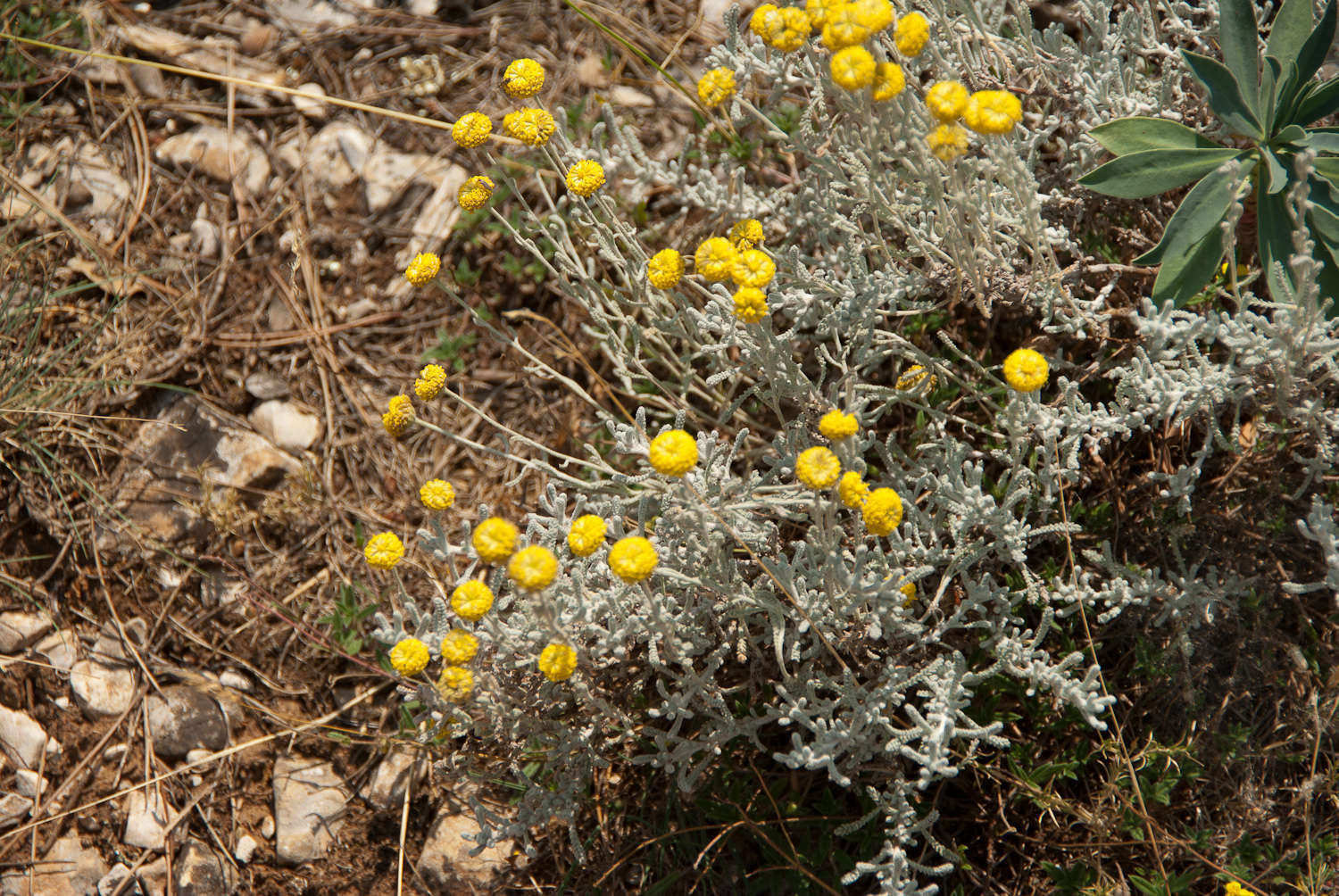
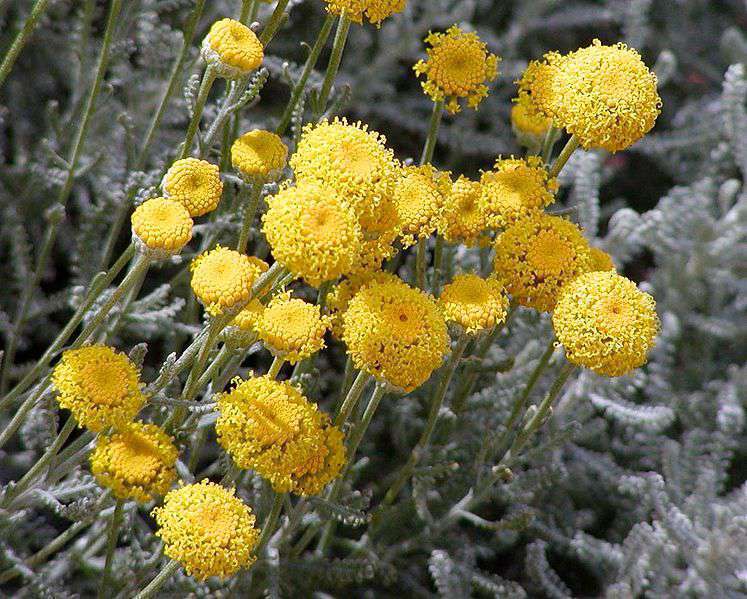
La santoline petit cyprès est un sous-arbrisseau de 20 à 50 centimètres. Elle est sempervirente (feuillage persistant) : elle ne perd pas ses feuilles en hiver. Il s'agit d'une plante à forte odeur aromatique dont les fleurs jaunes sont présentes de juin à août. La plante apprécie la chaleur et les sols calcaires. Elle possède de nombreuses propriétés et était autrefois utilisée comme insecticide pour chasser les mites. Aujourd'hui, elle est cultivée comme plante ornementale.
